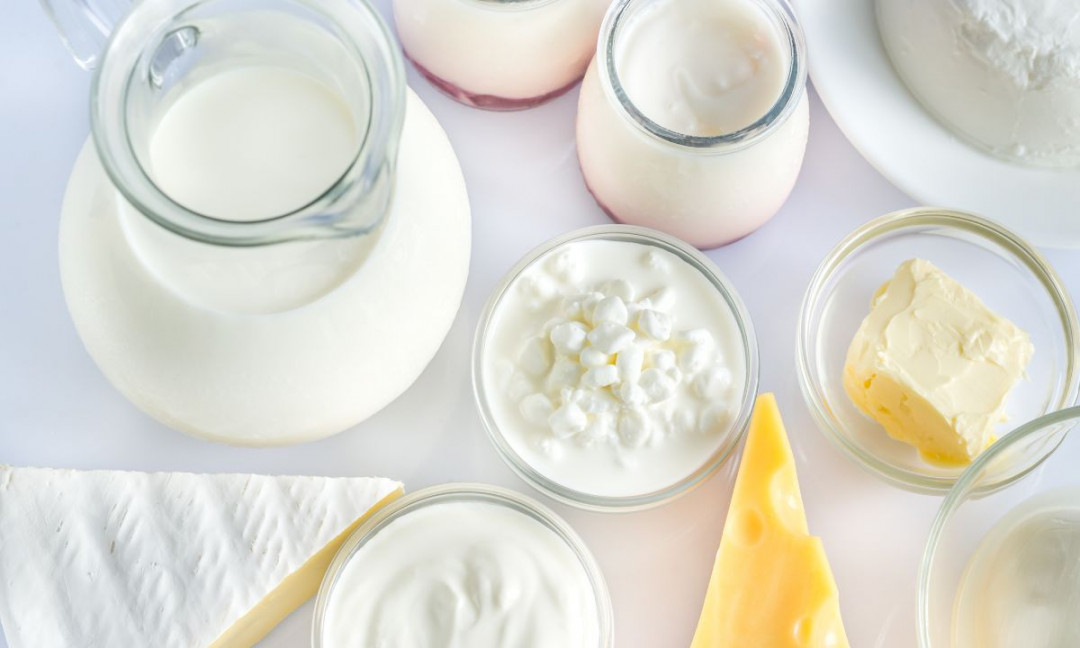
Lactose, a Sugar Unlike Others ? [1]
The nutritional guidelines of several countries recommend the inclusion of milk and dairy products in a balanced diet. Among the various nutrients present in these products, lactose is the main sugar in milk. Although scientific research mainly focuses on the fate of lactose during digestion and the resulting cases of intolerance, it is worth noting that lactose also has various beneficial effects on health. Indeed, it has a low glycemic index and contributes little to the formation of dental caries.
“Lactose has multiple beneficial effects on health: it has a low glycemic index and has a low cariogenic power. In infants, lactose is a key nutrient as it is believed to aid in the colonization of the digestive tract by intestinal microbiota, thus potentially protecting the newborn from infections. Finally, lactose that is not digested in the small intestine could be fermented by intestinal microbiota bacteria and could modulate it beneficially.”
The Nutrition Department of Lactalis Research and Development, represented by Amandine Ligneul and Mathilde Guerville, was able to conduct a literature review highlighting the benefits of lactose in various areas such as infant, adult, or clinical nutrition. [1]
[1] Link to full article : click here
Definition and Digestion of Lactose: Word Choice Is Essential
Lactose is a disaccharide composed of glucose and galactose. Lactase, an enzyme present in the cells of the small intestine, allows the hydrolysis of lactose, releasing glucose and galactose, which are then available for absorption.
Within the population, there are several lactose digestion profiles: lactase persistence and non-persistence (NPL), with or without associated intolerance [2]. Approximately 30 to 40% of the population has persistent lactase activity, allowing for complete lactose digestion. However, NPL, characterized by a decrease in lactase activity, affects approximately 68% of the world’s population [3-7]. In cases of NPL, lactose is partially digested, reaching the colon where it is metabolized by intestinal bacteria into various metabolites, sometimes causing symptoms of intolerance such as abdominal pain, bloating, and flatulence. This phenomenon, called lactose intolerance, depends on factors such as the composition of the intestinal microbiota, the quantity, and timing of lactose consumption. [3-7]

Prebiotic Power of Lactose
The notion of prebiotics is defined as “a substrate that is selectively used by host microorganisms conferring a health benefit.”
If lactose is not fully digested in the small intestine, it can reach the colon intact, where it becomes a source of energy for the intestinal bacteria present. Therefore, it can be envisaged that the fermentation of residual lactose by certain beneficial bacteria could have a potential prebiotic effect. It has been shown in in vitro models as well as in human clinical studies that lactose could increase the presence of Bifidobacterium within the intestinal microbiota, bacteria known for their beneficial effects on health [8,9]. Consequently, since lactose has a beneficial effect on the growth of Bifidobacterium within the microbiota, it could be considered a prebiotic in people with lactose malabsorption, which accounts for approximately 70% of the world’s population. [10]
“The prebiotic index represents the relationship between changes in ‘beneficial’ and ‘harmful’ bacteria of the intestinal microbiota relative to their baseline levels. In people with malabsorption, the prebiotic index of lactose was evaluated at 5.75, a ratio comparable to that found for lactulose and other known prebiotics. Finally, concerning people capable of fully digesting lactose, a study suggests that lactose that is not digested and ends up in the colon could also have a prebiotic function.”
Lactose: A Key Ingredient in Infant Formulations
Lactose is the primary compound found in breast milk, with its concentration increasing with the stage of lactation: approximately 40 g/L for colostrum, 65 g/L for follow-up formula, and 75 g/L for toddler milk (11). When hydrolyzed by lactase, lactose breaks down into glucose, an essential nutrient to meet the energy needs of infants, and galactose, a key element necessary for myelin synthesis (12). Recent studies have also shown that lactose may play a significant role in shaping the infant’s intestinal microbiota from an early age by promoting the growth of beneficial bacteria (13,14).
“In infants allergic to cow’s milk proteins, the addition of lactose (38 g/L) to a formula also leads to a significant increase in the number of Bifidobacteria and Lactobacillus, and a significant decrease in the number of Bacteroides and Clostridia compared to the same formula without lactose.”

Beyond its prebiotic aspect, could lactose replace sugar?
The Glycemic Index (GI) measures the variation in blood glucose levels 2 hours after ingestion, resulting in a classification of carbohydrates relative to each other. Although few studies have been conducted on disaccharides, it has been estimated that lactose would have a GI of 46 compared to sucrose (GI = 65), glucose (GI = 103), and maltose (GI = 105) [15]. This low GI can be explained by two reasons: delayed digestion of lactose into glucose and galactose in the small intestine by lactase, which is not the case for simple glucose, whose digestion occurs much earlier in the digestive system [16]. Furthermore, this low GI could be linked to the absence of an insulinemic response to galactose [17].
Moreover, lactose has a lower sweetness potency than sugars traditionally used in the food industry (lactose 30% [35,36], fructose (110—120%), glucose (70—80%), maltose (40—50%)). Despite this lower sweetness potency, it would be entirely feasible to replace some of these high-GI sugars with lactose in applications such as chocolate or biscuit manufacturing. Its lower sweetness potency could also offer other advantages. Indeed, it is suggested that lactose does not induce responses from the dopaminergic system, also known as the reward system, which is typically activated following the consumption of other sugars [18]. Thus, it can be assumed that lactose consumption during childhood could reduce the habituation to sweet taste, thereby helping decrease the preference for sweet flavors in adulthood.
Conclusions
Due to the numerous health benefits of lactose, recent nutritional recommendations from French, European, and global health authorities exclude lactose from the definition of free sugars, the reduction of which is recommended to combat metabolic diseases. This new stance on lactose, no longer classified as a free sugar, could allow lactose to be used in various food matrices and even replace sugar in certain formulations.
“There is currently no evidence showing adverse effects of lactose on the health of healthy adults. Therefore, global, European, and French recommendations advocate excluding lactose from guidelines aimed at reducing sugar consumption.”
Contact us for more information!
Bibliographie:
[1] Guerville M, Ligneul A. Le lactose, un sucre pas comme les autres. Cahiers de Nutrition et de Diététique [Internet]. 2024 Jan 18 [cited 2024 Mar 28]; Available from: https://www.sciencedirect.com/science/article/pii/S0007996023001700
[2] Storhaug CL, Fosse SK, Fadnes LT. Country, regional, and global estimates for lactose malabsorption in adults: a systematic review and meta-analysis. The Lancet Gastroenterology & Hepatology. 2017 Oct 1;2(10):738–46
[3] Stobaugh H. Maximizing Recovery and Growth When Treating Moderate Acute Malnutrition with Whey-Containing Supplements. Food Nutr Bull. 2018 Sep;39(2_suppl):S30–4.
[4] Zoetendal EG, Raes J, van den Bogert B, Arumugam M, Booijink CC, Troost FJ, et al. The human small intestinal microbiota is driven by rapid uptake and conversion of simple carbohydrates. ISME J. 2012 Jul;6(7):1415–26.
[5] Bond JH, Levitt MD. Quantitative Measurement of Lactose Absorption. Gastroenterology. 1976 Jun 1;70(6):1058–62.
[6] Gänzle MG. Chapter 4 – Lactose—a conditional prebiotic? In: Paques M, Lindner C, editors. Lactose [Internet]. Academic Press; 2019 [cited 2022 Jan 20]. p. 155–73. Available from: https://www.sciencedirect.com/science/article/pii/B9780128117200000040
[7] EFSA Panel on Dietetic Products, Nutrition and Allergy (NDA). Scientific Opinion on lactose thresholds in lactose intolerance and galactosaemia. EFSA Journal. 2010;
[8] Mäkivuokko HA, Saarinen MT, Ouwehand AC, Rautonen NE. Effects of lactose on colon microbial community structure and function in a four-stage semi-continuous culture system. Biosci Biotechnol Biochem. 2006 Sep;70(9):2056–63.
[9] Szilagyi A. Chapter 2 – Digestion, absorption, metabolism, and physiological effects of lactose. In: Paques M, Lindner C, editors. Lactose [Internet]. Academic Press; 2019 [cited 2022 Mar 11]. p. 49–111. Available from: https://www.sciencedirect.com/science/article/pii/B9780128117200000027
[10] Hidalgo-Cantabrana C, Delgado S, Ruiz L, Ruas-Madiedo P, Sánchez B, Margolles A. Bifidobacteria and Their Health-Promoting Effects. Microbiology Spectrum. 2017 Jun 23;5(3):5.3.21.
[11] Saint L, Smith M, Hartmann PE. The yield and nutrient content of colostrum and milk of women from giving birth to 1 month post-partum. Br J Nutr. 1984 Jul;52(1):87–95.
[12] EFSA (European Food Safety Authority). Scientific Opinion on nutrient requirements and dietary intakes of infants and young children in the European Union1. EFSA JOURNAL. 2013;
[13] Natividad JM, Marsaux B, Rodenas CLG, Rytz A, Vandevijver G, Marzorati M, et al. Human Milk Oligosaccharides and Lactose Differentially Affect Infant Gut Microbiota and Intestinal Barrier In Vitro. Nutrients. 2022 Jun 19;14(12):2546.
[14] Van den Abbeele P, Sprenger N, Ghyselinck J, Marsaux B, Marzorati M, Rochat F. A Comparison of the In Vitro Effects of 2’Fucosyllactose and Lactose on the Composition and Activity of Gut Microbiota from Infants and Toddlers. Nutrients. 2021 Feb 25;13(3):726.
[15] Foster-Powell, Kaye, Holt, S.HA, Brand-Miller, JC. International table of glycemic index and glycemic load values: 2002. | The American Journal of Clinical Nutrition |. 2002 [cited 2021 Mar 2]; Available from: https://academic.oup.com/ajcn/article/76/1/5/4689459
[16] Hofman DL, van Buul VJ, Brouns FJPH. Nutrition, Health, and Regulatory Aspects of Digestible Maltodextrins. Crit Rev Food Sci Nutr. 2016 Sep 9;56(12):2091–100.
[17] Romero-Velarde E, Delgado-Franco D, García-Gutiérrez M, Gurrola-Díaz C, Larrosa-Haro A, Montijo-Barrios E, et al. The Importance of Lactose in the Human Diet: Outcomes of a Mexican Consensus Meeting. Nutrients. 2019 Nov 12;11(11).
[18] Volkow ND, Wang GJ, Baler RD. Reward, dopamine and the control of food intake: implications for obesity. Trends Cogn Sci. 2011 Jan;15(1):37–46.















